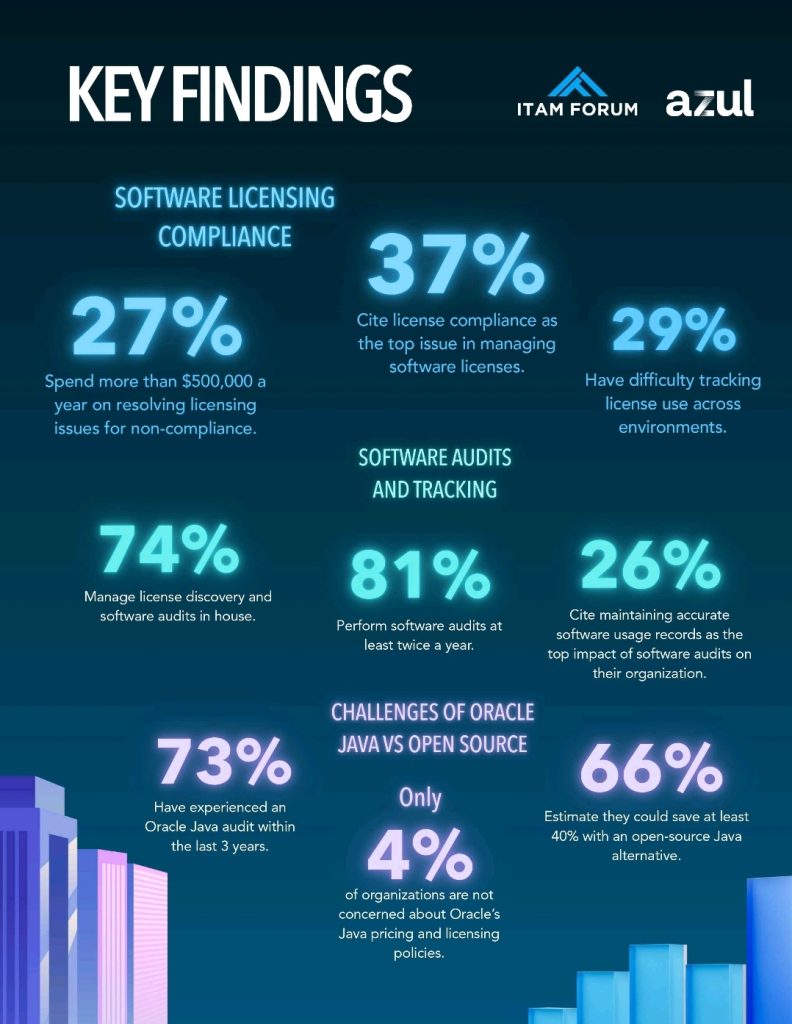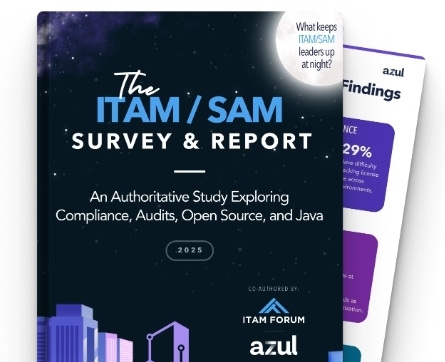Picture this: You’re sipping your morning coffee when suddenly your phone buzzes. It’s an urgent message from your IT team. Oracle’s audit team just arrived unannounced. Your heart sinks because you know what’s coming next in terms of software license non-compliance.
This scenario plays out more frequently than you might think. In fact, a recent survey by Azul and the ITAM Forum reveals that 73% of enterprises have experienced an Oracle Java audit within the last three years. Moreover, this isn’t just an IT problem anymore—it’s fundamentally reshaping customer experience strategies across industries.
The Real-World Impact on Customer Experience
When software license issues strike, they don’t just affect your backend operations. Instead, they create ripple effects that directly impact your customers. Consider what happens when your customer-facing applications suddenly become non-compliant.
First, your development teams must halt feature rollouts to address compliance gaps. Consequently, customers wait longer for promised enhancements. Additionally, budget constraints from unexpected license penalties force teams to postpone customer experience improvements. Therefore, what begins as a compliance issue quickly becomes a customer satisfaction problem.
Furthermore, the survey data shows that 27% of enterprises now spend more than $500,000 annually resolving software license non-compliance. These substantial costs inevitably reduce resources available for customer experience initiatives.
The Software License Compliance Complexity Challenge
Modern software environments present unprecedented challenges for customer experience leaders. Hybrid cloud architectures multiply vendor terms exponentially. Meanwhile, application inventories continue expanding across distributed teams. As a result, maintaining compliance visibility becomes increasingly difficult.
Survey participants identify compliance management as their top organizational challenge at 37%. This complexity particularly affects customer-facing applications where downtime or performance issues directly impact user satisfaction. Subsequently, teams struggle to track usage consistently across on-premises and cloud environments.
The challenge intensifies when considering that 25% of organizations report complex software configurations make tracking application usage more difficult. This tracking difficulty creates blind spots that can surprise teams during audits.
Internal Management Struggles
Despite these complexities, 74% of survey participants manage license discovery and software audits primarily in-house. This self-reliant approach creates significant operational strain on teams responsible for delivering exceptional customer experiences.
Organizations consistently struggle to maintain accurate software usage records, with 26% citing this as a primary challenge. Additionally, 23% report difficulty understanding complex licensing terms and conditions. These struggles compound when teams must provide accurate licensing compliance metrics during audits.
The operational disruption extends beyond IT departments. More than 30% of organizations report unexpected audit results including:
- Disruption of operations across the entire organization
- Unexpected budget impacts
- Decision to change vendors
- Stalled projects
These disruptions directly affect customer experience delivery timelines and resource allocation.
The Oracle Java Audit Phenomenon
The survey reveals particularly acute Oracle Java licensing challenges affecting customer experience teams. With 96% expressing concern about Oracle’s pricing and licensing policies, organizations face mounting pressure to reassess their Java strategies.
Oracle’s employee-based pricing model forces companies into complex monitoring and tracking investments. These investments divert resources from customer experience improvements. Teams must implement new monitoring systems, tracking tools, and internal audit processes to ensure compliance.
The financial impact proves substantial. Companies not intending to pay Oracle must invest significantly in elimination efforts. This resource allocation directly competes with customer experience budgets and initiatives.
Migration Momentum and Customer Benefits
Responding to these pressures, 79% of organizations have migrated, are actively migrating, or plan to migrate to open-source Java alternatives. This migration trend reflects a strategic shift toward more predictable, customer-focused technology investments.
Organizations considering migration cite security and reliability as primary drivers at 51%. Cost reduction follows at 42%, while simpler compliance ranks at 40%. These priorities align directly with customer experience objectives of reliable, secure, and cost-effective service delivery.
Among organizations completing migrations, security motivations increase to 57%. This emphasis on security directly supports customer trust and satisfaction initiatives. Additionally, cost savings from open-source alternatives prove substantial, with 66% estimating savings of at least 40% compared to Oracle Java licensing costs.

The Growing Market Reality
The global ITAM market growth from $1.15 billion in 2019 to $1.49 billion in 2023 represents a 6.9% compound annual growth rate. This growth reflects the escalating complexity organizations face in managing software assets while delivering exceptional customer experiences.
The SAM market subset expects even faster growth at 16% compound annual growth rate through 2029. This acceleration indicates that software asset management becomes increasingly business-critical for customer experience success.
Contributing factors include rising software expenditures now accounting for 29% of IT budgets on average. Complex licensing models driven by cloud computing and virtualization further complicate compliance efforts. Meanwhile, increasing regulatory compliance requirements add additional layers of complexity.
Strategic Implications for Customer Experience
These findings reveal a fundamental mismatch between modern software licensing complexity and organizational resources. Customer experience leaders must recognize that poor license management directly threatens service delivery and customer satisfaction.
As Martin Thompson, founder of the ITAM Forum, notes: “ITAM and SAM professionals are becoming increasingly vital as organizations increasingly recognize that poor license management can result in significant financial penalties and operational disruptions.”
The data reveals concerning trends where vendor licensing complexity turns routine maintenance into recurring six-figure compliance exercises. When 73% of enterprises face audits and 25% spend over $500,000 annually on compliance issues, sustainability becomes questionable.
Scott Sellers, co-founder and CEO at Azul, emphasizes: “Organizations shouldn’t have to burn ITAM resources, interrupt projects, or absorb surprise penalties just to run their applications. Moving to open-source alternatives lets them break free from the audit treadmill, regain budget and focus on delivering value.”
The Path Forward
Customer experience leaders must proactively address software license management as a strategic initiative. This approach requires executive buy-in, adequate resources, and alignment across IT, development, legal, and procurement teams.
Organizations should evaluate their current Java dependencies and consider migration strategies that reduce audit risk while maintaining service reliability. Open-source alternatives offer predictable costs, reduced compliance complexity, and greater resource allocation flexibility for customer experience initiatives.
Ultimately, the choice between proprietary and open-source Java solutions extends beyond technical considerations. It represents a strategic decision about how organizations allocate resources between compliance overhead and customer value creation.
The survey data demonstrates that successful organizations increasingly choose paths that minimize compliance friction while maximizing customer experience investment. This strategic alignment enables sustainable growth and competitive advantage in an increasingly complex software landscape.
Therefore, customer experience leaders must engage proactively in software licensing discussions. Their involvement ensures that technology decisions support rather than hinder customer satisfaction objectives. After all, in today’s competitive landscape, every resource allocated to compliance overhead represents a missed opportunity to delight customers.

